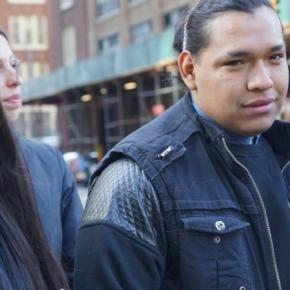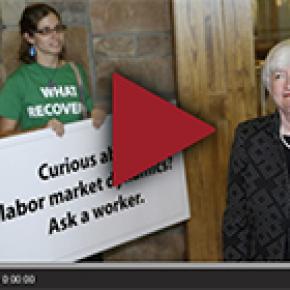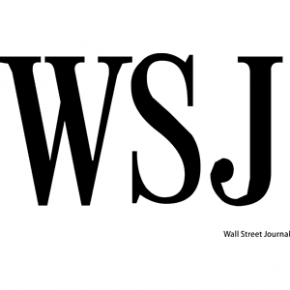Piden Fondos para Programa de Ayuda Legal a Inmigrantes en NY
El Diario - February 24, 2015, by Cristina Loboguerrero - Legisladores estatales y grupos que abogan por los derechos...
El Diario - February 24, 2015, by Cristina Loboguerrero - Legisladores estatales y grupos que abogan por los derechos de los inmigrantes pidieron ayer al gobernador Andrew Cuomo que apruebe fondos para implementar un programa que daría defensoría legal gratuita a los inmigrantes indocumentados que afrontan un proceso de deportación.Los asambleístas Francisco Moya y Marcos Crespo, junto a representantes de varias organizaciones hicieron su pedido frente a la Corte federal de inmigración en el bajo Manhattan."El derecho de acceder a un abogado es uno de los derechos más importantes", precisó Moya, asambleísta de Corona, Queens, quien estima que hacen falta $4.5 millones para implementar el programa en todo el estado.Su colega Marco Crespo, por su parte, indicó que la iniciativa permitiría mantener unidas muchas familias y traería además beneficios "sociales y económicos".Ambos legisladores pusieron como ejemplo el programa Unidad Familiar Inmigrante de la Ciudad de Nueva York (NYIFUP, por su sigla en inglés), que con un financiamiento de $5 millones otorgado por el Concejo Municipal opera a pleno desde noviembre pasado. Según la abogada Ángela Fernández, directora de la Coalición de Derechos de los Inmigrantes del Norte de Manhattan, NYIFUP ha beneficiado a unos 900 inmigrantes."Hay 1,300 inmigrantes en el estado que por no poder pagar a un abogado están en riesgo de ser deportadas", dijo Fernández.
Un día en la Corte
Los lunes, martes y miércoles, tres jueces revisan los nuevos casos en sus oficinas del piso 11 de la mencionada Corte, 201 de la calle Varick. Se estima que cada magistrado ve entre 7 a 15 casos por día; el resto de la semana lo dedican a los casos ya presentados.
Cada sala tiene unas pocas sillas, destinadas a la familia del procesado. Delante de las sillas hay un pequeño escritorio donde se sienta el acusado, vestido con el uniforme de recluso; a su izquierda, un intérprete; a su derecha, el abogado defensor. Enfrente, un representante del gobierno argumenta por la deportación.En el centro de la pequeña sala, el juez escucha atentamente a las dos partes. El acusado no puede dirigirse directamente al juez.Los abogados llegan temprano en la mañana para entrevistar a los detenidos y revisar sus casos antes de presentarlos en la corte durante las horas de la tarde.Oscar Hernández (21) fue detenido en 2011. Gracias a la ayuda legal del grupo de Servicios de Defensores de Brooklyn pudo salvarse de ser deportado y ahora está en proceso de legalizar su situación migratoria."No es lo mismo cuando uno está representado por un abogado, porque al desconocer las leyes y no poder pagar a alguien se está desorientado en todo el proceso", dijo el hombre, que vino a Estados Unidos hace siete años escapando de la violencia de su país
Source
Why the Phrase 'Late Capitalism' Is Suddenly Everywhere
An investigation into a term that seems to perfectly capture the indignities and absurdities of the modern economy......
An investigation into a term that seems to perfectly capture the indignities and absurdities of the modern economy...
Read the ful article here.
Why Community Schools Are The Key To Our Future
by Kyle Serrette, Director of Education Justice Campaigns, Center for Popular Democracy John H. Reagan High...
by Kyle Serrette, Director of Education Justice Campaigns, Center for Popular Democracy
John H. Reagan High School is located in northeast Austin. In the late 1990s and early 2000s, Reagan’s student body became increasingly poor as middle-class families left the area. In 2003, a student was stabbed to death by her former boyfriend in a school hallway. The incident made headlines and scared away neighborhood families. Students left Reagan in droves. Enrollment dropped from more than 2,000 students to a new low of 600, and the graduation rate hovered just below 50 percent. In 2008, the district threatened to close Reagan. In reaction, a committee of parents, teachers, and students, brought together by Austin Voices for Education and Youth, formulated a plan to turn Reagan into a community school. The district accepted their plan.
Today, five years after adopting the community school strategy, Reagan is graduating 85 percent of its students, enrollment has more than doubled, and a new early college program has made it possible for Reagan’s students to earn two years of college credits from a nearby community college while still attending high school.
Reagan High School, or any community school for that matter, doesn’t immediately look different than any other school — that is, until you spend some time there.
At 3.8 million square miles, the United States is a big place, with almost 50 million primary and secondary students attending more than 98,000 public schools in 14,000 school districts.
Many things unite our vastly different 50 states, but our approach to education is not one of them.
It is fair to say that the United States does not have one approach to education. Rather, it has thousands of pedagogical approaches that fit into roughly the same structure (elementary, middle, high school).
If the universe of poorly funded public schools in the United States were the night sky on a clear night, you would find some really bright stars and a lot of jarring empty space. The problem with a scattershot approach to education in such a vast country is that there’s no effective way to share successful practices.
Thousands of schools in poor neighborhoods fail generation after generation, while other schools with the same demographics and challenges have found ways to succeed and break the cycle of failure. Today, if you are a business, nonprofit, or any type of entity, it is quite hard to figure out if a school wants help or what kind of help it needs. Most schools lack a clear analysis of what they need to help improve outcomes, and if they do have a clear understanding of needs, most lack a point person to manage partnerships.
Unfortunately, there is also no sound system for sharing successful strategies from schools that are getting it right. This is analogous to a heart surgeon developing a revolutionary life-saving approach and only telling people she bumped into about it. Yet that’s basically how our education system works in the United States.
While poor schools have taken many paths to transform themselves into successful schools, one particular path has worked again and again. There are 5.1 million children enrolled in approximately 5,000 community schools in the United States, and those numbers are growing quickly. In New York, mayoral candidate Bill de Blasio promised to create 100 community schools. As mayor, he has fulfilled that campaign promise and recently announced a plan to grow that number to 200 by 2017.
Philadelphia mayoral candidate Jim Kenney announced a plan to open 25 new community schools during his first term. This past December, Ras Baraka, mayor of Newark, announced a plan to scale up community schools with a tentative commitment of $12.5 million from the Foundation for Newark’s Future, the organization created to manage the $100 million that Facebook founder Mark Zuckerberg donated to the city in 2010 to reform the city’s floundering school system.
Community schools are not a new concept. John Rogers, community schools historian at UCLA, tells us they have existed at least since the turn of the 20th century in many forms, but always with the same objective of addressing inequities at both the school and community levels. Jane Addams’s Hull House in the 1890s is an early example: “There were kindergarten classes in the morning, club meetings for older children in the afternoon, and for adults in the evening more clubs or courses in what became virtually a night school. The first facility added to Hull House was an art gallery, the second a public kitchen; then came a coffee house, a gymnasium, a swimming pool, a cooperative boarding club for girls, a book bindery, an art studio, a music school, a drama group, a circulating library, an employment bureau, and a labor museum.”
Long before Reagan became a community school, it housed a daycare for the babies of student mothers so they could continue their education. That daycare still exists today with approximately 20 babies enrolled, but there’s more. When school social workers noticed that student moms at Reagan were missing classes to take their babies to doctor appointments, the social workers applied for and won a grant to have a mobile clinic visit the campus once a week. Now student moms can make appointments for their babies to receive checkups without leaving school. Reagan also allows parents to eat lunch with their babies in the daycare and attend parenting classes. Students in Reagan’s Pregnant and Parenting Teen Program now have a remarkable 100 percent graduation rate.
Discipline problems historically have plagued Reagan. Students were frequently suspended, and chronic attendance issues landed students and families in court, which then imposed fines that families could not afford. Dropout rates were high.
Today, a full-time bilingual social worker works to diagnose chronic attendance problems and connects students and their families with supports, with service referrals rather than fines. A student-led youth court has been developed in partnership with the University of Texas–Austin Law School. The youth court and a restorative justice program together have dramatically reduced discipline issues. Today, Reagan is a top Title I high school in Austin.
While there is a fair amount of variability within schools that have implemented this strategy, thousands of schools have gotten it just right. We wanted to understand what distinguished them from the others.
Here’s what we found those schools shared in their strategic plans: 1) culturally relevant and engaging curricula; 2) an emphasis on high-quality teaching, not high-stakes testing; 3) wraparound supports, such as health care and social and emotional services; 4) positive discipline practices, such as restorative justice; 5) parent and community engagement; and 6) inclusive school leadership committed to making the transformational community school strategy integral to the school’s mandate and functioning.
It all seems intuitive. Schools that form strategic partnerships with businesses, nonprofits, local and federal governments, universities, hospitals, and other organizations to meet core unmet needs are usually successful over time. In most strapped schools, a principal doesn’t have time to find the appropriate partners, let alone conduct an analysis of needs. This leaves schools with a random partner strategy, which is no strategy at all. The community school strategy puts one person in charge of determining the school’s ever-evolving needs. The cost incurred to create this position and the work it supports — around $150,000 — pays for itself and then some.
Nine years ago, when Baltimore’s Wolfe Street Academy elementary school became a community school, 90 percent of its students were living in poverty, 60 percent spoke a language other than English at home, and its mobility rate was high at 46.6 (less than half of its students attended for more than three years). Wolfe Street Academy ranked 77th in the district in academic measures, and only half its children reached reading proficiency by fifth grade. It had no library and only sporadic parent or community engagement.
Today, Wolfe Street ranks second in the city academically, its mobility rate has dropped to 8.8 percent, 95 percent of fifth-grade students are reading proficient, and its average daily attendance rate is 95 percent. It has a library, a book club, and volunteer help from a retired librarian. Forty parents attend a morning meeting every day before school while the students eat breakfast. They share school and community news, both good and bad. This transformation at Wolfe Street has taken place even as more students living in poverty have arrived and as the number of students speaking a language other than English in the home has grown.
During one of Wolfe Street’s annual needs assessments, it determined that its curriculum was not dynamic enough to give the school a chance to achieve its academic goals. In response, Wolfe Street formed a partnership with the Baltimore Curriculum Project, which now provides staff with professional development and supports the school with teacher recruitment and retention.
When the assessment revealed that many of its students had never visited a dentist the school partnered with the University of Maryland Dental School to hold free oral health screenings for all the students. A partnership was formed as well with the University of Maryland’s School of Social Work as a way to respond to what the assessment revealed about the daily impact of trauma on their students’ lives. Now licensed social workers and multiple social work interns are available and offer case management and referrals.
We are in the enviable position of knowing what works. And now, with the recent passage of the federal education legislation Every Student Succeeds Act, funds are explicitly available for the essential elements of community schools, such as community school coordinators, needs assessments, and after-school programming.
A United States where every public school is a community school would be a very different place — it would be a school with the community inside it. Your bank, local architect, grocery store, hospital, and other institutions we associate with being part of the broader community outside our schools would be deeply integrated into them. The tax code could be designed to accelerate and incentivize partnerships with schools. The lines between the inside and outside of schools would blur.
And if you imagine a United States in 2050 where all 98,000 schools have a clear sense of their individual needs and are able to communicate these needs effectively to potential partners, this might be a game changer.
With a new granular understanding of every school’s needs, we could scale partnerships and connect schools with similar needs or pair schools that could benefit from each other’s strengths. We could analyze needs and assess intervention strategies between schools and across districts, cities, states, and the nation.
If you can imagine the world back when it wasn’t connected by the internet and experience again how everything changed when we finally were connected, that is the level shift our schools would experience if every school were a community school. A networked school system would exist, and our atomized system of disparate schools would fade away as a relic of the past.
Source
New York City Increases Its Resistance to Federal Entreaties on Foreign-Born Detainees
The New York Times - December 5, 2013, by Kirk Semple - For years, New York City correction officials routinely...
The New York Times - December 5, 2013, by Kirk Semple - For years, New York City correction officials routinely provided federal immigration authorities with information about foreign-born detainees in their custody. The city, in response to federal requests, would transfer many of those detainees into federal custody, often leading to their deportation.
But a series of laws passed by the City Council over the past two years sought to restrict this cooperative agreement.
And according to new city statistics, the laws appear to be achieving their goal, prompting celebration — albeit guarded — among immigrants’ advocates.
From July, when the most recent of the restrictive laws went into effect, to September, city officials responded to 904 federal hold requests, known as detainers, according to the statistics. Of those detainers, the city declined to honor 331, or 37 percent.
In contrast, until the laws were passed, the city customarily honored every detainer, according to city officials.
“We feel good about the impact that this legislation has had because it has stopped the deportation of a lot of New Yorkers,” Javier H. Valdes, co-executive director of Make the Road New York, an advocacy group, said on Thursday.
“Our hope,” he said, “is that with the new administration we can increase the number of New Yorkers who will not be turned over to immigration.”
Even with the new city laws, New York’s restrictions are still not as tight as those of other major cities, like Chicago and Washington, advocates said.
Cooperation between local governments and federal immigration authorities has been a deeply contentious issue around the United States.
Some jurisdictions, convinced that the federal government has not done enough to enforce immigration laws, have increased their role in immigration enforcement. But others, concerned about the impact of deportations on their communities, have tried to put distance between themselves and the immigration machinery of the federal government.
Much of the recent debate has surrounded the federal Secure Communities program. The initiative allows Homeland Security officials to more easily compare the fingerprints of every suspect booked at a local jail with those in its files. If they find that a suspect is a noncitizen who is in the country illegally or has a criminal record, they may issue a detainer.
The Secure Communities program, a cornerstone of the Obama administration’s immigration enforcement strategy, has been vehemently opposed by some elected officials around the country, who have sought to limit their jurisdictions’ participation.
In November 2011, the City Council passed a law that narrowed the range of detainers the city would honor. Among other terms, the law prevented correction officers from transferring immigrants to federal custody if the inmates had no convictions or outstanding warrants, had not previously been deported, were not suspected gang members or did not appear on a terrorist watch list.
The effect on the detainer system was immediate: Correction officials went from routinely honoring all detainers to, according to the recently released statistics, about 75 percent of them.
In February, the Council imposed additional restrictions, including blocking detainers for immigrants facing all but the most serious misdemeanor charges, like sexual abuse, assault and gun possession.
Under these new guidelines, the percentage of detainers the city rebuffed rose to about 37 percent from about 25 percent. The rates may have even been higher had the federal government not concurrently altered its own detainer policy, limiting the range of immigrants it would seek custody of.
Still, immigrant advocates said they would press for more restrictions and have reoriented their lobby toward Mayor-elect Bill de Blasio, who has vowed to end the city’s cooperation with federal immigration detainers except for detainees convicted of “violent or serious felonies.”
Newark, San Francisco and Santa Clara, Calif., are also among the cities that have more restrictive detainer policies than New York, according to Emily Tucker, staff attorney at the Center for Popular Democracy, an advocacy group in New York.
“New York City can do much better than these numbers show we are doing at the moment,” she said.
Source
Ford Supporters Descend on Senate Offices of Grassley and Collins to Demand GOP #CancelKavanaugh

Ford Supporters Descend on Senate Offices of Grassley and Collins to Demand GOP #CancelKavanaugh
The Women's March, NARAL Pro-Choice America, and the Center for Popular Democracy all participated in the protest,...
The Women's March, NARAL Pro-Choice America, and the Center for Popular Democracy all participated in the protest, where demonstrators chanted, "We believe Christine Ford! We believe Anita Hill!" before proceeding to senators' offices.
Read the full artilce here.
Fed Up with the Economy?
The Good Fight - October 15 2014, by Ben Wikler - Why haven't wages risen in 40 years? It's not just bad luck. The...
Source
Group Blasts Fed for Lack of Diversity in Leadership
Source:...
Source: Wall Street Journal
Federal Reserve leadership is overly male, almost entirely white and drawn too frequently from the banking community, according to a group critical of the central bank.
A new report from the Center for Popular Democracy’s Fed Up campaign analyzes the types of people populating the Fed’s Washington-based board of governors, the regional bank presidencies and the regional bank boards of directors.
The report notes that all voting members of the central bank’s rate-setting Federal Open Market Committee and nearly all the regional bank presidents are white. Just two of the 12 presidents and two of the five governors are women.
“These key decision-making bodies remain dramatically unbalanced and unrepresentative of the vast majority of people who participate in the economy,” said the group, which has called for more public input into the selection of regional bank presidents and their performance evaluations.
The center said the composition of the Fed’s leadership bodies violates the spirit of the law that created the central bank, which calls for membership drawn from many different industries and interests.
A Fed spokesman responded to the criticism about the regional bank boards by saying the central bank has “focused considerable attention” to finding directors “with diverse backgrounds and experiences” that represent agriculture, commerce, industry, services, labor and consumers, as the law requires.
“We also are striving to increase ethnic and gender diversity,” the spokesman said, noting a rise in minority representation on the boards from 16% in 2010 to 24% today. Female representation has risen from 23% to 30% over the same period, and all told, 46% of regional directors now are either a woman or a member of a racial minority, the spokesman added.
Fed Chairwoman Janet Yellen is the central bank’s first female leader.
The Fed Up group, with a membership drawing heavily from labor unions and community organizations, is a regular critic of the central bank. It has argued in recent months that the Fed shouldn’t raise short-term interest rates and has pressed its case in private meetings with Fed officials. Several of its members appeared outside the central bank’s research conference in Jackson Hole, Wyo., last year to call attention to their views.
The group’s concern about a dearth of diversity at the Fed has been echoed by former Minneapolis Fed chief Narayana Kocherlakota. He argued in a blog post last month the central bank has appeared to give short shrift to racial concerns in part because there have been almost no African-Americans in its policy-making ranks. He wrote that the concerns of racial minorities have been “underemphasized” at the Fed.
The last African-American to serve on the Fed board was Roger W. Ferguson Jr., who served as a governor between 1997 and 2006 and as vice chairman from 1999 to 2006. The first African-American to serve as a Fed governor was Andrew Brimmer, from 1966 to 1974.
The report showed particular concern about the directors on the regional Fed bank boards, which are drawn from the private sector. It said 83% are white, compared with around two-thirds of the total U.S. population.
“The diversity of regional board members is meant to inform the bank presidents, who in turn, participate in discussions and vote at the FOMC,” the report said. “However, the boards, the presidents, and the FOMC fail to represent their region’s racial diversity.”
The report also said its analysis found that representatives of banking and what it calls commercial interests have increased their share of regional Fed board seats in recent years. Representatives of community groups and labor unions account for fewer than 5% of the available board seats, according to the center.
Among the regional Fed bank boards’ most high-profile roles is selecting their bank presidents. Recent regulatory changes now bar directors from participating in that process if their firms are regulated by the bank.
The directors also provide information to bank officials about local economic conditions and give advice on running the banks.
New York Fed taps John Williams to be next president
"Today, the Federal Reserve concluded another opaque and controversial Reserve Bank presidential selection process by...
"Today, the Federal Reserve concluded another opaque and controversial Reserve Bank presidential selection process by ignoring the demands of the public and choosing yet another white man whose record on Wall Street regulation and full employment raises serious questions,” said Shawn Sebastian, Fed Up’s director. Fed Up said it submitted a list of nine non-white male candidates to the New York Fed’s search committee and that most of them were never contacted.
Read the full article here.
The Week Ahead in New York Politics, May 21
On Monday at 11 a.m. at City Hall Park, “Representative Adriano Espaillat (NY-13), joined by New York State Assemblyman...
On Monday at 11 a.m. at City Hall Park, “Representative Adriano Espaillat (NY-13), joined by New York State Assemblyman Marco Crespo and community leaders, will hold a press conference calling for secure housing for residents of Puerto Rico in support of the Housing Victims of Major Disasters Act, introduced by Rep. Espaillat earlier this Congress.” Other participants will include former City Council Speaker Melissa Mark Viverito, Frankie Miranda of Hispanic Federation, and Ana María Archila of Center for Popular Democracy, among others.
Read the full article here.
Bill Would Make Maryland Employers Set Work Schedules Earlier
As Labor Day approaches, advocates in Maryland are pushing for a change in how workers receive their schedules....
As Labor Day approaches, advocates in Maryland are pushing for a change in how workers receive their schedules.
Take Hilaria, who lives in Gaithersburg and works at a fast food restaurant. (That's all she'll say on the record, fearing potential reprisal from her employer.) Hilaria says she often doesn't receive her weekly work schedule until right before she has to start it.
"Sometimes it three to four days before the schedule [starts]," Hilaria says. "So we don't have enough time for activities — like for my daughter in school, or for my appointment with a doctor."
Advocates for workers argue Hilaria's story is not uncommon for those in the restaurant and hospitality industries. They're pushing the Maryland General Assembly to approve a measure next year that would make employers issue schedules three weeks in advance. It's called the Fair Work Week Act.
Del. David Moon of Montgomery County says it would provide protections for workers who don't have many.
"Schedules change. You're asked to fill in for people at the last second. It's a busy night and all of the sudden you have to jump in and completely alter your schedule. And if you can't, you're often made to find a replacement yourself," Del. Moon says.
A similar bill never received a vote during this year's session in Annapolis. Nationwide, Fair Work Week bills have been more successful at the city and county level. San Francisco approved a similar measure last year, and Albuqueque, New Mexico, is currently debating one.
Source: WAMU 88.5












9 days ago
9 days ago